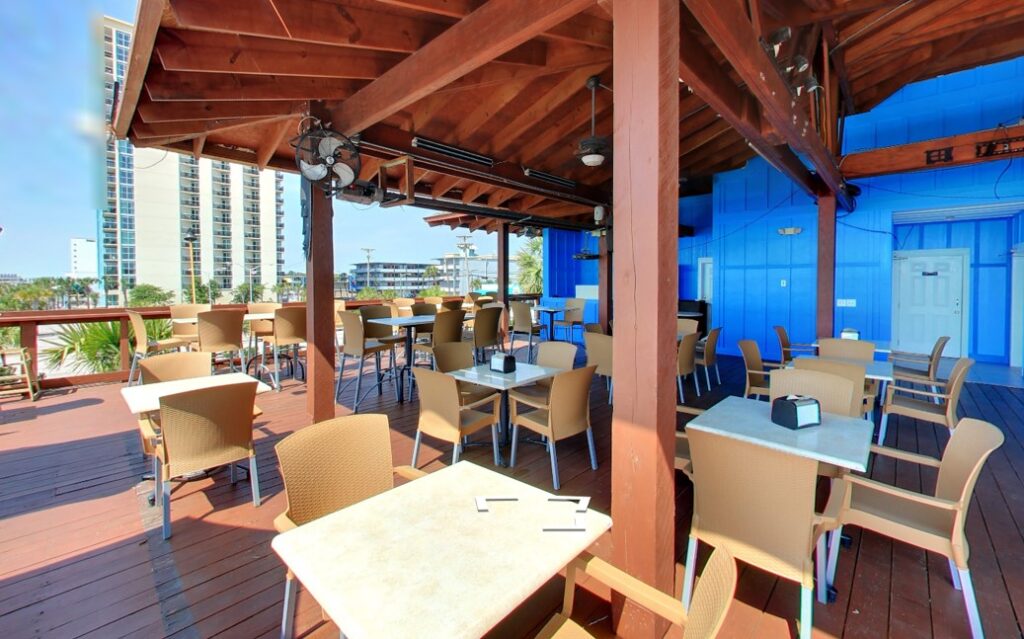Oceanfront restaurants are more than just dining destinations; they are experiences where architecture and the natural environment converge to create a harmonious, unforgettable ambiance. Designing an oceanfront restaurant requires a careful blend of aesthetics, functionality, and respect for the natural surroundings, ensuring diners enjoy both a culinary and sensory journey.
Maximizing Natural Light and Views
One of the primary considerations in designing an oceanfront restaurant is maximizing the natural beauty of the surrounding environment. Expansive windows that frame the panoramic views of the sea are essential. These design elements ensure that diners feel connected to the ocean throughout their meal, whether they’re enjoying a sunset dinner or a mid-day feast. Large glass walls, bi-fold doors, or even open patios allow light and air to flow freely, immersing guests in the coastal atmosphere. This integration of nature and structure is not just a design choice; it’s part of the overall experience.
Blending Aesthetics with Coastal Elements
The most successful oceanfront restaurant designs incorporate natural materials that complement the environment. Coastal restaurants often feature elements like reclaimed wood, stone, and organic textures to echo the natural landscape. A color palette inspired by the sea—think soft blues, sandy neutrals, and warm sunset tones—further enhances the connection between the restaurant and its surroundings. These aesthetic choices create a seamless transition from the interior to the exterior, making the restaurant feel like an extension of the beach itself.
Functional Challenges in Coastal Locations
Operating in a coastal environment presents unique challenges that architects must consider. The salty air, humidity, and potential for storms mean that the materials used must be resistant to corrosion and wear. Coastal structures often require more frequent maintenance, so durability is key. Designers must balance beauty with functionality, ensuring that every choice, from the roofing materials to the foundation, can withstand the coastal elements. Additionally, open spaces and patios should be equipped with adaptable features, such as retractable roofs or wind-blocking barriers, allowing the restaurant to function in various weather conditions while maintaining the open-air feeling.
Creating a Relaxed Yet Upscale Atmosphere
While many oceanfront restaurants focus on providing a relaxed, casual atmosphere, there’s also a growing trend of creating upscale dining experiences by the sea. High-end finishes, sleek furniture, and modern lighting can be integrated without disrupting the laid-back coastal vibe. The goal is to offer a sophisticated experience while maintaining a connection to the surrounding environment. This balance is achieved through thoughtful design that focuses on comfort, elegance, and a sense of place.
Sustainability and Environmental Impact
Designing a restaurant along the coast comes with a responsibility to protect the fragile ecosystem. Many architects and restaurateurs are incorporating sustainable practices into their designs, from using eco-friendly building materials to incorporating energy-efficient systems. Restaurants are also focusing on reducing their environmental footprint by implementing rainwater harvesting, solar panels, and other green technologies. Sustainable design not only benefits the environment but also enhances the guest experience by showcasing a commitment to preserving the beauty of the coast.
The combination of thoughtful design, architectural innovation, and respect for the coastal environment makes oceanfront dining a truly unique experience. When you dine at a beautifully designed oceanfront restaurant, you’re not just enjoying a meal—you’re immersed in a sensory journey where the natural world is an integral part of the experience. The perfect oceanfront restaurant offers much more than great food; it connects diners with the sea in a way that’s both immersive and unforgettable.


